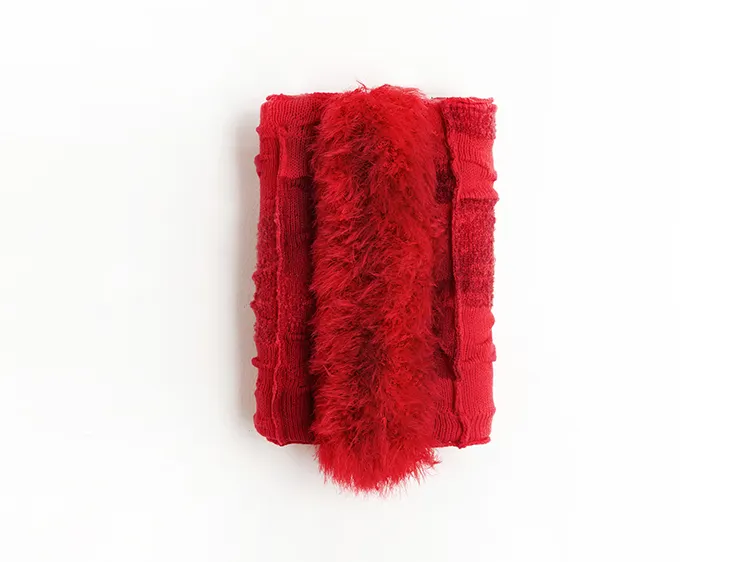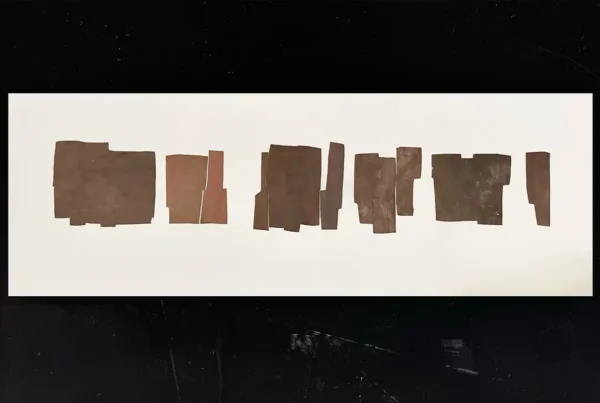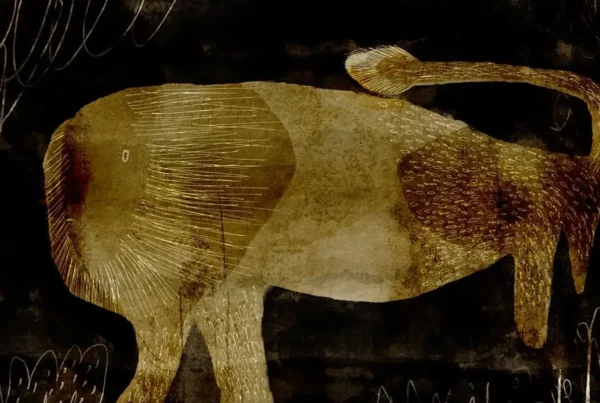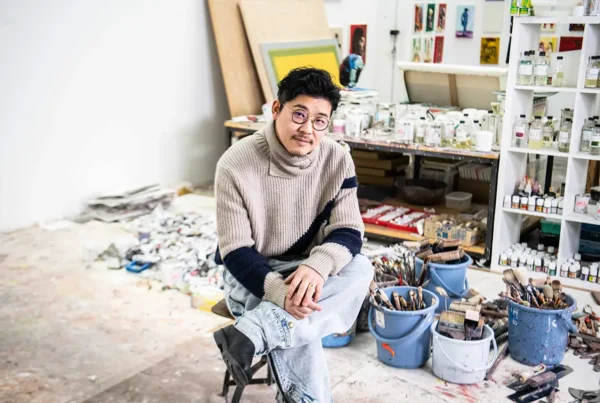“My main theme is fundamental concepts—especially ‘Existence’—which I aim to present both tactilely and visually through soft, sculptural textiles.”
The Interwoven Journey of a Textile Visionary
Seongeun Lee’s artistic path is deeply rooted in her lifelong engagement with textiles. Currently pursuing a Ph.D. at Pusan National University in Korea, she previously earned her MA in Textiles at the Royal College of Art in London, refining her expertise between two dynamic artistic environments. Her creative journey has been shaped by both the physical landscapes she inhabits and the profound influence of her family, particularly her mother, who is also a textile artist. The decade she has spent immersed in textile research and practice has become the defining force behind her work, providing a foundation for her evolving artistic philosophy.
Her work challenges conventional notions of textiles, expanding beyond surface design into the realm of soft sculpture. Rather than adhering to traditional textile applications, she manipulates fibers into three-dimensional forms that engage viewers on both tactile and conceptual levels. These sculptural textiles do not convey immediate or overt messages but instead function as metaphors—subtle yet evocative explorations of essential human questions. Themes of existence and materiality are central to her work, as she continuously searches for ways to transform abstract concepts into tangible experiences.
The artists who inspire Lee also reflect her dedication to pushing the boundaries of textile art. She finds deep resonance in the works of Magdalena Abakanowicz and Olga de Amaral—figures known for their sculptural approaches to fiber art. The lasting impression of their exhibitions in Norway and France has solidified her commitment to exploring the potential of textiles as both an artistic and structural medium. In her workspace, surrounded by posters of these influential figures, she cultivates a creative environment that fuels her ongoing experiments with form, texture, and spatial dynamics.
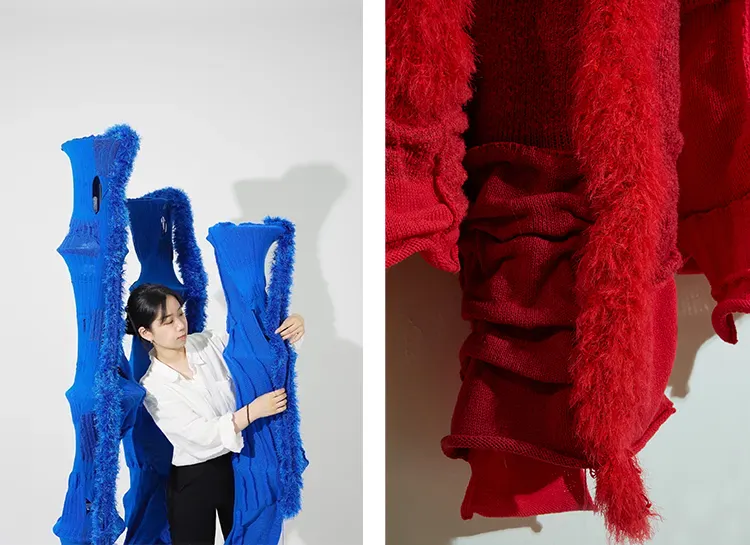
Seongeun Lee: A Legacy of Artistic Influence and Exploration
Lee’s artistic trajectory has been profoundly shaped by her mother, whose own career as a weaver laid the groundwork for Lee’s exploration of textiles. Growing up in an environment where artistic discourse was a natural part of daily life, she was encouraged to think critically about materiality, form, and the expressive possibilities of fiber. Conversations with her mother extended beyond technique and process, delving into the conceptual and philosophical dimensions of art. This intellectual exchange became a catalyst for her own inquiries into the sculptural and abstract qualities of textiles.
While her mother provided the foundation for her artistic sensibilities, it was the work of Magdalena Abakanowicz that ignited her academic and professional exploration of textile sculpture. During her doctoral studies, Lee devoted significant research to the Lausanne International Fiber Art Biennale, where she analyzed Abakanowicz’s transformation of textiles from flat surfaces into monumental sculptural works. Abakanowicz’s ability to imbue fiber with spatial presence and symbolic depth resonated deeply with Lee, influencing both her artistic direction and scholarly pursuits.
Beyond historical influences, Lee’s engagement with contemporary artists has also informed her practice. Donald Judd’s “Untitled” modular works have been particularly significant in shaping her approach to textile sculpture. Judd’s minimalist philosophy—his emphasis on materiality and repetition—aligns with Lee’s current explorations of modular textile forms. By stripping away excess and focusing on the essential qualities of structure and texture, she seeks to create works that echo the simplicity and clarity found in Judd’s sculptures while remaining true to the inherent flexibility of fiber-based materials.
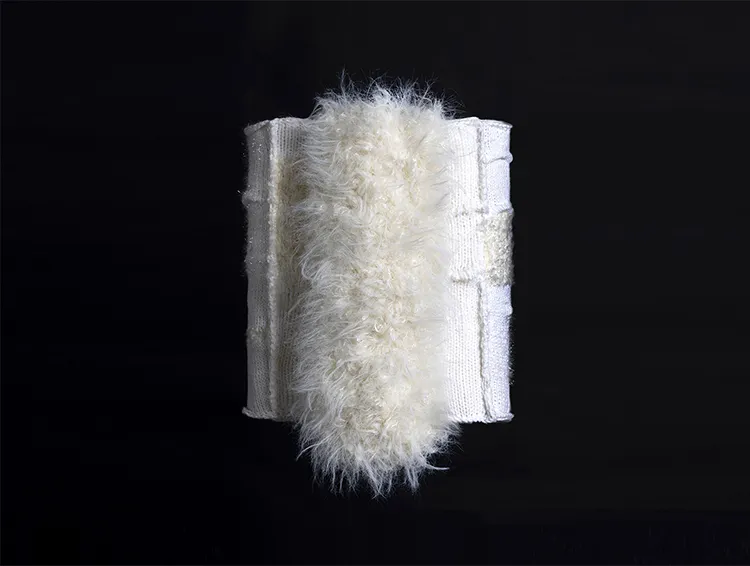
Materiality and the Sculptural Potential of Textiles
Lee’s choice of textiles as her primary medium is driven by both its tactile qualities and its structural possibilities. Her studies at the Royal College of Art allowed her to refine her technical skills, particularly in knitting, which has become a cornerstone of her practice. She carefully selects yarns of varying thicknesses and textures to construct surfaces that balance resilience with softness. This meticulous attention to material ensures that her works retain their sculptural integrity while maintaining the sensory engagement inherent to textiles.
To bridge the gap between the softness of fiber and the rigidity of form, Lee incorporates metal frameworks within her sculptures. These internal structures provide the necessary support for her textile works to maintain their intended shape while preserving the organic fluidity of the material. This interplay between strength and flexibility is central to her artistic philosophy—she is constantly exploring how textiles can simultaneously convey stability and movement, resistance and adaptability.
Her vision extends beyond individual sculptures to the transformation of entire spaces through textile interventions. She envisions immersive installations where woven forms redefine spatial boundaries, allowing audiences to engage with textiles on an architectural scale. By pushing the limits of fiber’s structural potential, she aims to create environments where material and space interact in dynamic and unexpected ways. Her work suggests that textiles, often perceived as decorative or utilitarian, possess the capacity to reshape physical spaces and redefine artistic encounters.
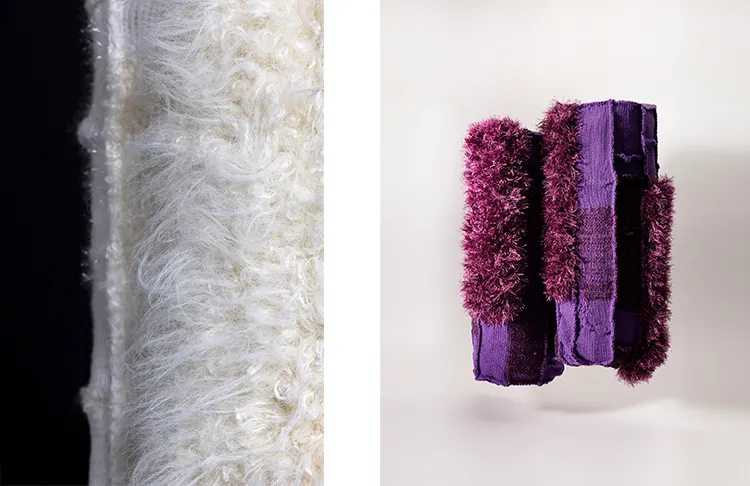
Seongeun Lee: The Future of Textile-Based Spatial Experiences
Lee’s artistic ambitions are centered on the idea of expanding the role of textiles beyond their traditional applications. She envisions large-scale works that challenge conventional perceptions of fiber by merging the flexibility of fabric with the structural strength of woven forms. By manipulating the inherent properties of textiles, she seeks to create immersive environments that invite viewers to experience fiber as both a material and a medium of spatial transformation.
Her approach is deeply influenced by the dialogue between materiality and minimalism, particularly in her ongoing exploration of modular textile sculptures. The influence of Donald Judd’s systematic approach to form is evident in her pursuit of repetition and simplicity within fiber-based constructions. However, rather than adhering strictly to rigid geometries, she introduces the organic variability of textiles, allowing for a fluid interpretation of modularity. Through this balance of precision and adaptability, she continues to push the boundaries of what textile-based art can achieve.
As she continues her research and practice, Lee remains committed to exploring the sculptural and architectural possibilities of textiles. Her future projects will further investigate how fiber can shape not only individual objects but entire spatial experiences. By integrating strength with softness, structure with fluidity, she aims to redefine how textiles function within contemporary art, offering a new perspective on their potential as sculptural and immersive elements. Through her evolving body of work, she challenges viewers to reconsider the role of textiles—not as passive surfaces but as dynamic, transformative forces within the artistic landscape.
